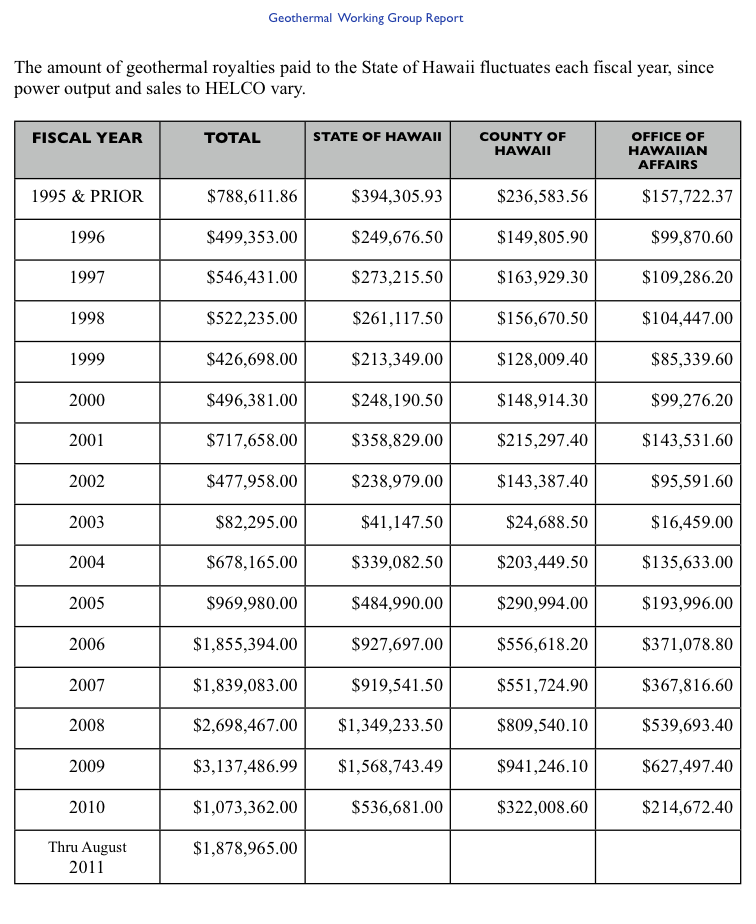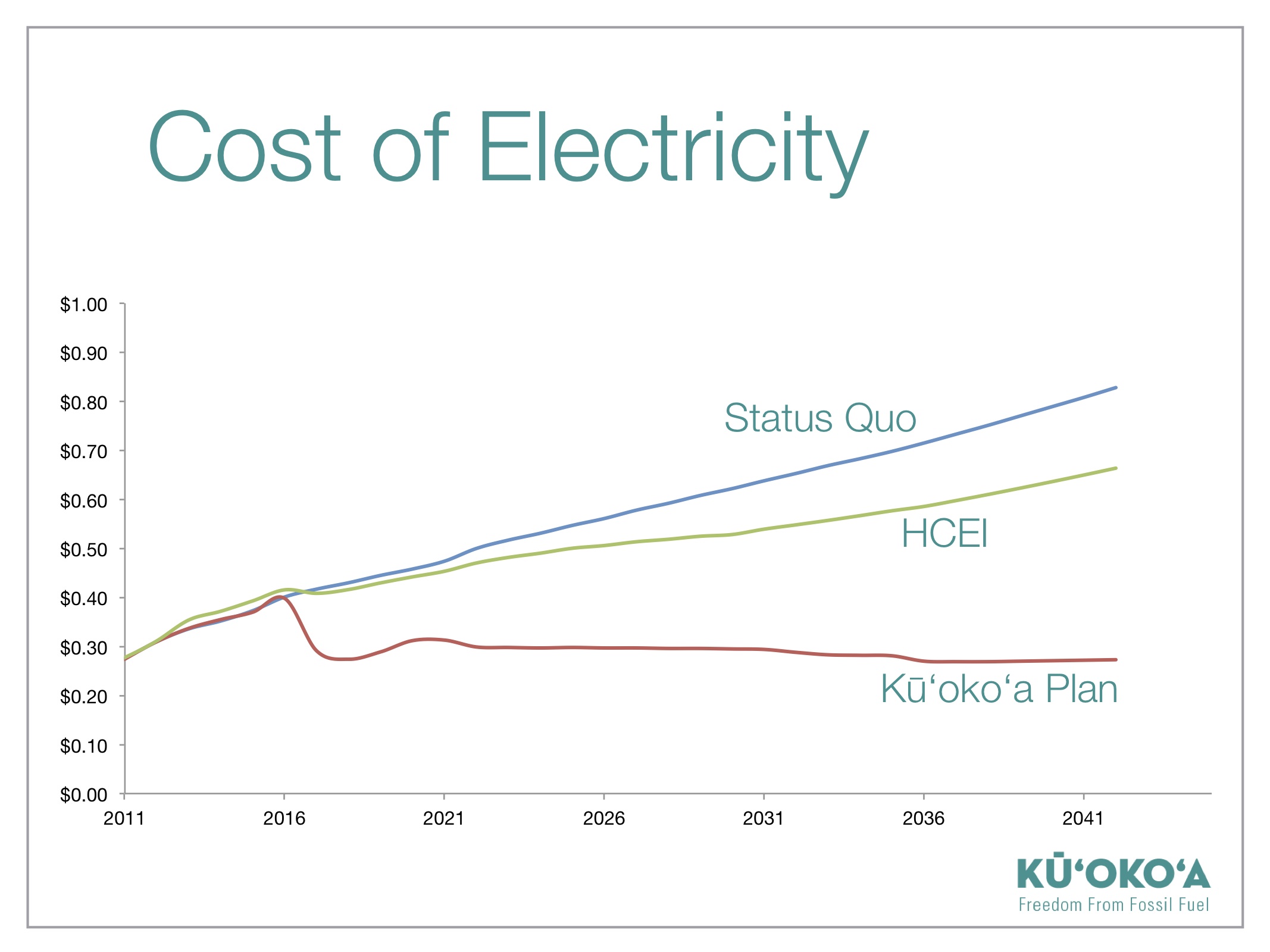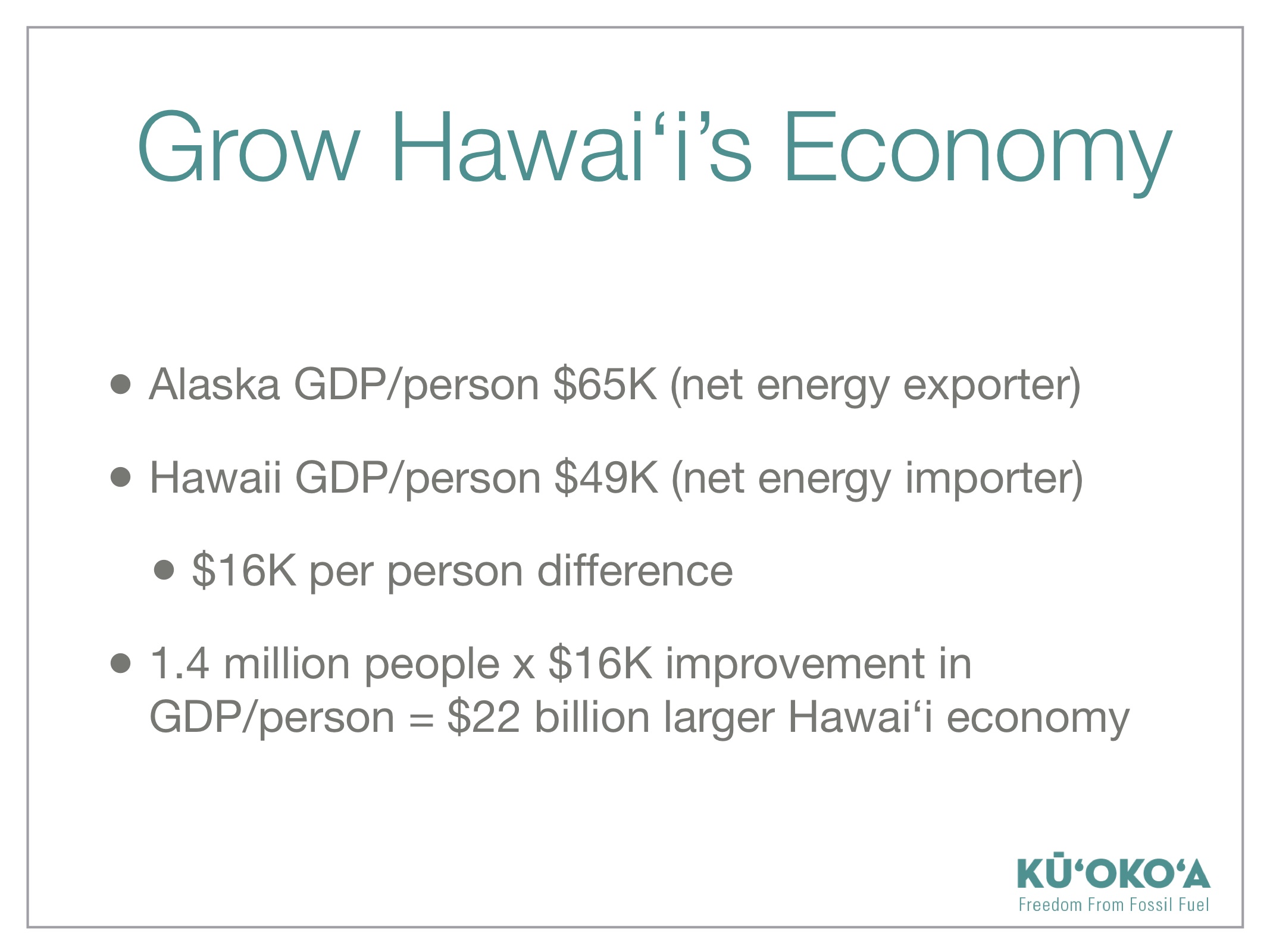I am becoming more and more critical of the Hawaiian Electric Company’s (HECO’s) top-level decision makers, and of their policies. I am sad to say that I have lost confidence in their ability to lead us safely into the future.
A Wall Street Journal article last September noted that Spain – the world leader in solar technology – stopped its generous subsidy to support the solar industry. Basically, ratepayers could not bear the cost of the subsidy.
So I was not surprised recently to hear HECO say it could not accept any more solar. What I was surprised about was that they reversed their direction immediately. Did things change? No. It was a missed opportunity to educate the public about what is truly going on. They chose not to.
Recently, HECO was turned down regarding its attempt to initiate Smart Grid on O‘ahu, Maui and the Big Island. Smart Grid is a developing system, and there was no need to be the first in the world to implement this. At Hawai‘i’s size, it is much smarter to be best in the world at copying the most successful systems. You get a tested system that does not cost the ratepayers as much.
Several years ago, HECO chose the biofuel path, but it did not have a serious conversation about it with farmers. Farmers know that they will not grow anything for 7 cents per pound. They might switch from growing food to growing fuel for 35 cents per pound, but oil prices would have to be $400 per barrel before it would send that price signal.
And small farmers would not be able to grow biofuels on the kind of scale that HECO needs, anyway. More likely, it would be on the scale of redemption of cans and bottles.
When HECO brought the biofuel meeting to Maui, there was
discussion about ultimately importing palm oil from Indonesia. Many of the folks in the audience were distressed at what would happen to animal habitat, especially the orangutan. HECO replied that it would source “green” biofuel.
We know that biofuels will be more expensive than fossil fuels. Will the rubbah slippah folks be able to afford it? Can small businesses afford to pay the resultant higher electricity rates?
Is this the solution that will give a continuous, competitive advantage to the islands, relative to the rest of the world?
We should look at the resources available on each individual island before we decide what is best for that particular island. It is the cost of the fuel, not whether it is brown or “green,” that is important.
On the Big Island, we know it must be done right. Geothermal
for base power is: proven technology, a low-cost alternative, has the smallest footprint and gives off no greenhouse gases.
The Oil Age is only 150 years old, and already we are worrying about depletion. According to Jim Kauahikaua, Scientist-in-Charge at the Volcano National Park Observatory, though, the “hot spot” under the Big Island will last for half a million to a million more years.
What about HECO’s general renewable energy strategy? They
say they are for everything – wind, solar, geothermal, ocean thermal, biofuels, biomass, etc. But being “for everything” seems to be a way of not talking about any one thing. HECO does not put any effort into enabling geothermal, so we can only assume that they do not really want it.
On the other hand, they do really want biofuels. “Shameless”
comes to mind. I am not for geothermal exclusively. But I do think there should be a prioritization of the various resources based on many factors, such as: proven technology, relative competitiveness, scalability, net energy, social consequence, geographic appropriateness, etc.
In other words, what will give us the best chance of surviving since we are living out here in the middle of the Pacific? “We are for everything” falls way short.
I think that the rubbah slippah folks intuitively have it figured out when they say: “One day, the boat not going come.” That is their shorthand way of saying: “One day, things will be too expensive, and the boat might as well not come.” In that scenario, we will be going back to the basics. The most important question one asks all day might be, “I wonder what color malo I going wear tomorrow?”
Two weeks ago, former Chancellor of UH Hilo Rose Tseng invited Bill Steiner, the Dean of the UH Hilo College of Tropical Agriculture and Forestry and myself to attend an REIS retreat put on by the UH Manoa College of Engineering.
I immediately noticed that the Big Island was not a focus and that geothermal was not on the radar. But we were able to express the Big Island’s concerns, and we were welcomed to participate fully. This is very encouraging.
HECO sent many of its people to the retreat because many of
those people work as engineers, and many graduated from the UH College of Engineering. I found HECO’s new Director of Renewable Energy Planning, Dora Nakafuji, impressive because she is willing to discuss alternatives in an inclusive way.
The most recent issue of Hawaii Business magazine describes the restructuring of HECO. I hope the new folks will change HECO’s
corporate culture, and take the time to understand the needs of the rubbah slippah folks. We can take the right path to survival and accommodate everyone’s needs at the same time.
In an ideal reorganization, HECO gains the trust of the community, and because its plan is mutually beneficial we go down to support it at the PUC. Not, no can. CAN!



